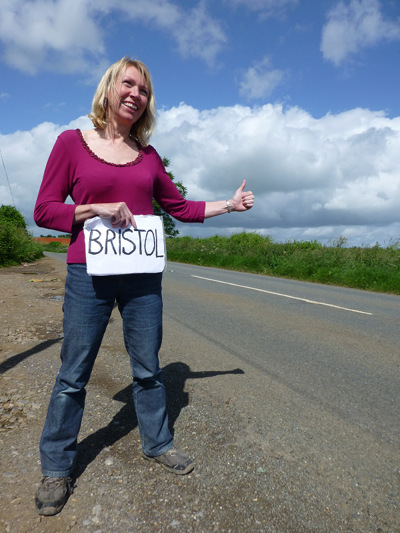 In today’s guest post, author Kath Kelly talks us through how her first non-fiction book came about and offers her tips for turning your own experiences into publishing gold.
In today’s guest post, author Kath Kelly talks us through how her first non-fiction book came about and offers her tips for turning your own experiences into publishing gold.
My first book, How I Lived a Year on Just a Pound a Day, was also my first attempt at giving an account of a turbulent time I lived through.
I was surprised to hear that many people felt they knew me after reading it, although we’d never met. This demonstrates how keen a reader is to open a window into someone else’s life: as escapism, certainly, but also from a desire to try another life on for size. I wasn’t telling people that they had to stop spending money, but I seemed to spark their curiosity: they were willing to imagine themselves in my shoes.
Include practical advice
A few people who read the book have done similar, or more extreme, challenges themselves, and I suppose they wanted to compare notes with me, but the vast majority of readers simply wanted to find out how it could be done. Just in case anyone did fancy having a go at extreme money-saving, I added practical hints and tips as an afterword.
The same applies to my hitch-hiking tales: do you see yourself as a solo international traveller, heading off without the security a Smartphone offers, with next to no money to bail yourself out of trouble? Probably not, but you might want to know what it feels like. Is it dangerous and lonely, or does the excitement outweigh the risks?
Make it entertaining, as well as informative
For the majority of your readers, personal experience stories simply provide an opportunity to imagine in the abstract, from the comfort of their favourite chair, so keep that in mind when writing it up. In some cases, you may be recounting an ordeal you wouldn’t wish on anyone else anyway, but you want to explain how you dealt with it.
I’ve realised, after talking to readers of my books, that they are eager to know how you got into the situation, how you got through it, and what you learned along the way. They want to find out about the feelings that came and went during the physical or emotional journey you took and how others reacted to your situation.
Provide some resolution
Most importantly, they want to know how it ended. Even in non-fiction, there needs to be a story arc of sorts – a beginning, middle and end. Your life is still going on, and the consequences of the incident you described are still evolving, but crucially, you have to allow the reader the satisfaction of a rewarding conclusion.
About the author
Kath Kelly is a Somerset-based writer and teacher. How I Lived a Year on Just a Pound a Day attracted a great deal of media interest, since it came out just as the recession began. Following on this success, Kath has published Thumbing Through: Hitch-hiking tales from my diaries and Square Meals for Tough Times as e-books, available to buy from Amazon.
